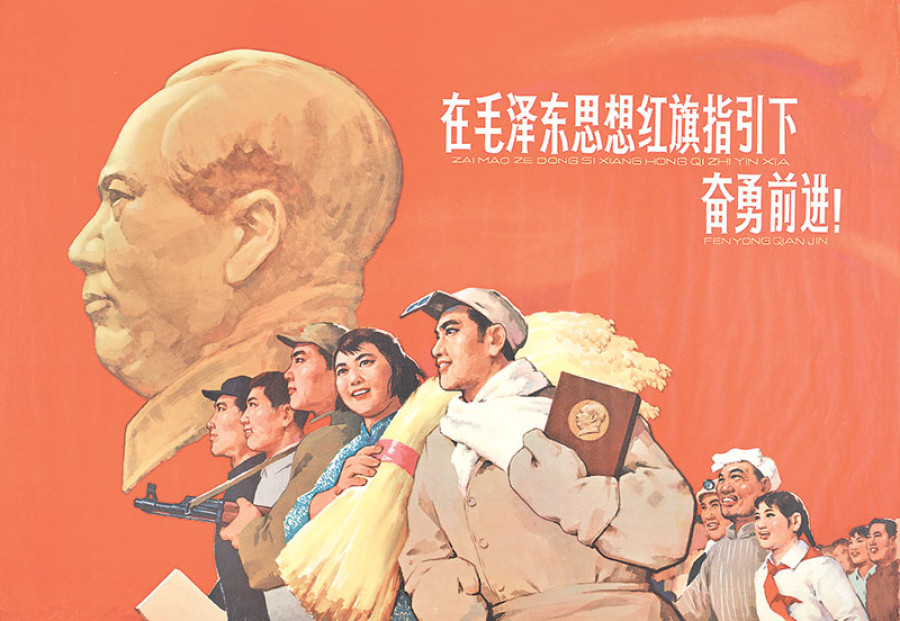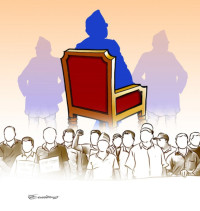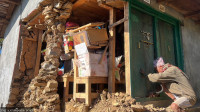Opinion
Naxalbari to Lhasa, via Kathmandu
China, after its war with India, lent support to several insurgent groups in India. The Naxalites were one of them
Amish Raj Mulmi
In many ways, the 1962 Indo-China war has come to define the Indian subcontinent’s modern contours. The border disputes between the two countries are a perpetual backdrop to any conversation they have, and despite the 21st century, it’s quite clear both haven’t forgotten the war. While China has always argued India’s policy of setting up outposts in disputed border areas led it to invade the country, a recent book by Swedish journalist BertilLintner (China’s India War: Collision Course on the Roof of the World, 2017) argues it was only a pretext for the war. Mao Zedong had long regarded Jawaharlal Nehru in the same mould as the British colonisers who had left; India had provided refuge to the Dalai Lama, which didn’t sit well with the Chinese, who were anyway convinced India was behind the Tibetan uprising. And finally, China wanted to see itself as the leader of the ‘Third World’, the post-colonial grouping of newly independent nations who had not allied with either the Americans (the ‘First World’) or the Soviets (‘Second World’). Nehru, with his skilful oration and his vision of Panchsheel non-alignment, had positioned himself as the leader of this ‘Third World’, and “China aspired to become the leader of the Third World and dethrone India from the position”, Lintner writes.
After the quick war delivered a bloody nose to India, it began to pursue a nuclear programme from 1963 onwards, ultimately succeeding in 1974. But, Lintner writes, China’s strategy after the war was not to seek an outright conflict with India, but to provide support in what would be a proxy war carried out by the many insurgent groups active within India’s volatile northeast, like the Nagas and the Mizos, or even IndianCommunists.
The fires of Naxalbari
China didn’t have to wait too long. In 1967, a group of peasants attacked a landowner in West Bengal’s Naxalbari, the first in a series of Left-wing extremist attacks that would also inspire current Nepal prime minister KP Oli and a few others to spearhead the Jhapa uprising in 1969. China was pleased; an editorial written in the People’s Daily, the voice of the Chinese Communist party, said, ‘A peal of spring thunder has crashed over the land of India... The spark in Darjeeling will start a prairie fire and will certainly set the vast expanses of India ablaze.’
In September that year, KanuSanyal, one of the Naxalite leaders, proposed the party seek out Chinese support. ‘Seeking military aid was never on our mind,’ Sanyal told his biographer for The First Naxal (SAGE India, 2014), his authorised biography; the Naxalites wanted ‘advice’ on how to proceed with the revolution in India. A four-member team, led by Sanyal, was to first approach the Chinese embassy in Dhaka. The team crossed the border to arrive at a supporter’s home, only to find their host was hesitant to risk transporting them to Dhaka.
Sanyal returned to India, but he had a new plan: to travel to China via Kathmandu.
Once again, a team of four led by Sanyal crossed over into Nepal from Raxaul, ‘extremely nervous of being caught by the security personnel’. From Birgunj, they boarded a bus to Kathmandu, where a hotel owner pointed them towards a Marwari dharamshala where they could stay for very cheap: ‘Rs 4 per day and that too inclusive of food’.
For the next two days, Sanyal and his band of left-wing guerrillas did what any newcomer to Kathmandu does: see the tourist sights. On the third day, they approached the Chinese Embassy, only to be turned back from the gates itself. ‘We had never expected such a rude treatment,’ Sanyal tells his biographer. But guerrilla fighters are made of tougher resolve, and when they returned the next day, the guards finally let them in (it’s assumed the necessary background intelligence checks had been carried out). They met a senior official who set up a meeting with the Chinese ambassador for the next day.
Sanyal went with his colleague Deepak Biswas to meet the ambassador, who offered them ‘tea and snacks and asked if we needed money. Expressing our gratitude, we told him that we had not come for monetary aid; rather, we wished to visit China to meet Chairman Mao.’ Sanyal and his crew waited anxiously in Kathmandu for the green light; finally, the ambassador told them Beijing would welcome them, and asked them to shift to the embassy the very next day.
Inside the safety of the embassy, the ambassador outlined their journey: ‘[A] vehicle would transport us to the Nepal-China border. From there, we will have to cross three large hills on foot [to Tibet].’ That afternoon, along with a 27-year-old Chinese guide, the four were taken to the border and asked to get off at a ‘hanging river bridge’ that connected Nepal to Tibet. ‘We realised it was an old, abandoned bridge; the wooden planks were missing at several places… We crawled ahead with utmost care.’
When they crossed the bridge, they reached a tunnel dug through the mountains. Sanyal’s biography isn’t clear whether the tunnel was within Nepali territory, but the biographer notes ‘the remains of the cigarette-bidi butts’ at the tunnel entrance assured the rebels the route ‘was in regular use for secret trips to China’.
The team soon began to feel the altitude. Biswas felt feverish, and lagged behind the others. Sanyal urged him on, but darkness had begun to descend. The five of them finally reunited around midnight and continued to walk, nourishing themselves on the cereal brought by their guide. Finally at dawn, they crossed the third hill into Tibet, where an armed party of five Chinese PLA soldiers were waiting for them.
There and back again
The rebels were taken to Lhasa, where they stayed for eight days, after which they were taken to Beijing to meet Mao. Their dream was coming true; they witnessed a grand assembly for the occasion of China Liberation Day on 1 October, and the next day, they briefly met with Mao himself. The rebels would eventually ‘stay put in China’ for three months, during which they would learn about ideology as well as military tactics. In December, they had another meeting with Mao and Zhou En Lai, the prime minister. ‘Forget everything you have learnt here in China. Once back...formulate your own revolutionary strategies,’ Mao told them.
The Naxalites were flown back to Lhasa, where after a military exercise, the rebels discussed future cooperation with the Chinese. PLA officers asked them to ‘minimise the use’ of the Chinese embassy in Kathmandu, and instead establish a secret transit route along ‘the Nepal-Bhutan route to China’. Sanyal doesn’t clarify whether other Naxalites used Nepali territory to pass through to China after him, but Lintner writes of a group of Mizo revolutionaries travelling to China in 1976 via Nepal.
Taking advantage of the ongoing construction work on the Arniko Highway, the four were taken back to Kathmandu on ‘an engineering vehicle’. Back in Nepal, the ambassador gave them Rs10,000 ‘towards establishing the secret transit camps to China’. The four left the very next day at dawn, crossing over into India by late afternoon.
From the reactions of the Chinese embassy, it can be surmised they were surprised to find the Naxalites at their doorstep, but didn’t want to miss the chance to further the Communist revolutionary cause to destabilise India, hence the permissions granted to the rebels to travel to Beijing. China had at this time made it official policy to export Maoism. Although it had provided support to some Nepali communist groups, it would primarily engage with the king as the centre of all political activity in the country. King Mahendra wouldn’t have been too pleased either if he’d found out about Naxalites travelling to Lhasa via Kathmandu, and that too with official assistance; little did he know that communism hadn’t actually used a taxi, but an engineering truck to arrive in Nepal. China viewed Nepal as an important counter against India’s influence in the Himalayan region, and it would have hesitated in promoting the use of the same route for others, hence their directive to stop using the Kathmandu embassy.
Even then, there was little Chinese support could do to stop the brutal police action against the Naxalites in India. Sanyal would himself be imprisoned for seven years in 1970, and after his release, he remained an ideological hero to Communist resistance within India, but little beyond that, until his eventual suicide in 2010. The People’s Daily prophecy of a ‘praire fire’ across India would have to wait. The spark lit by Naxalbari found a bonfire in the jungles of central India, where Maoists control vast swathes of territory even today, but they are no longer the same after years of dedicated security operations against them.




 12.12°C Kathmandu
12.12°C Kathmandu










